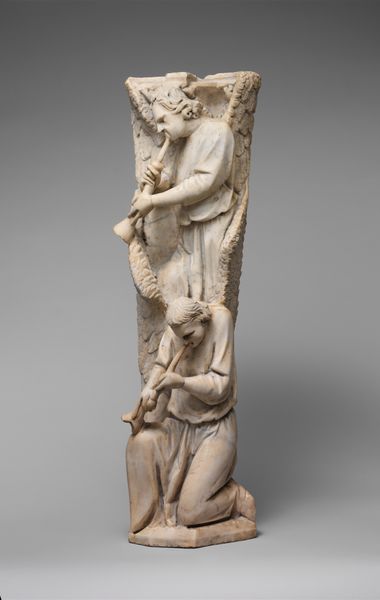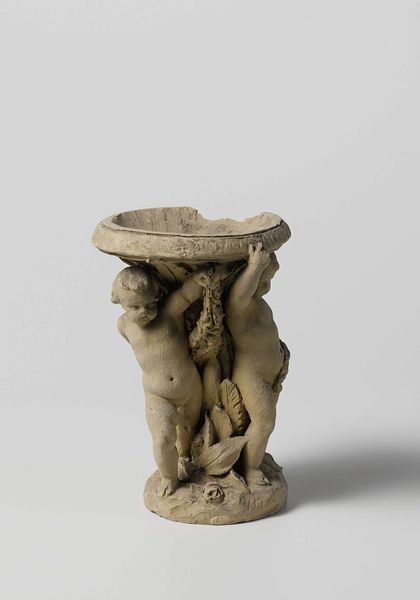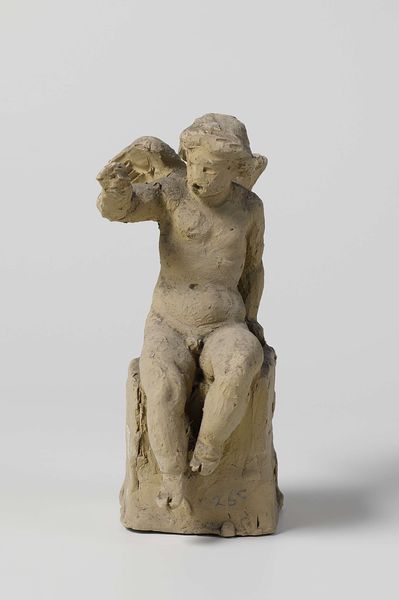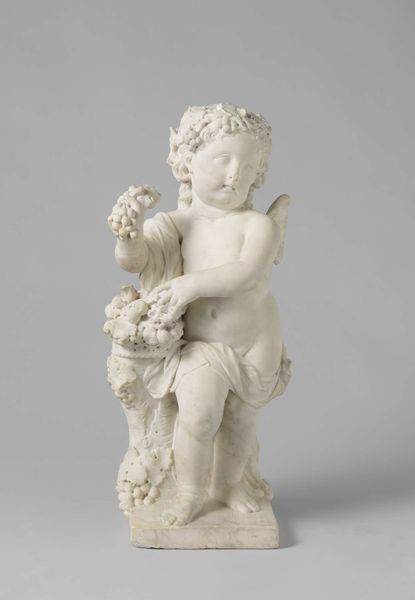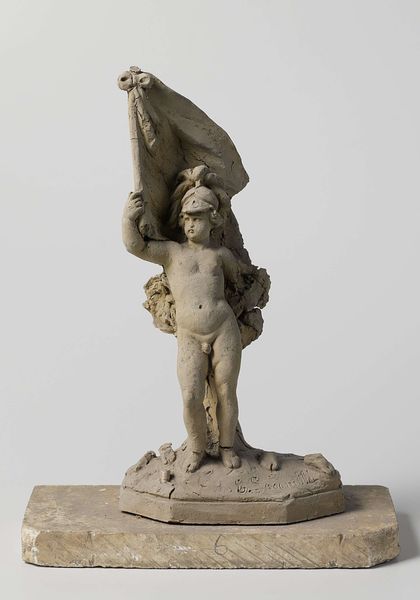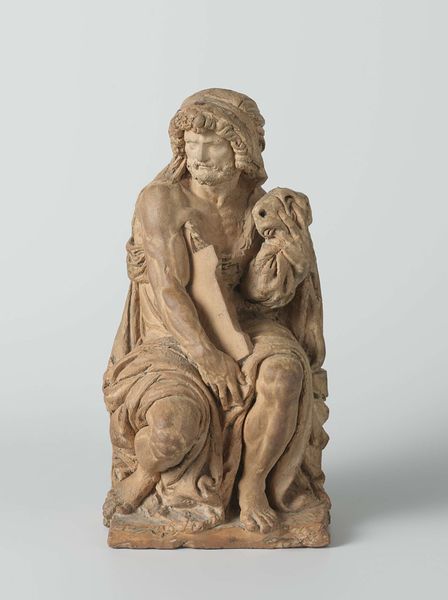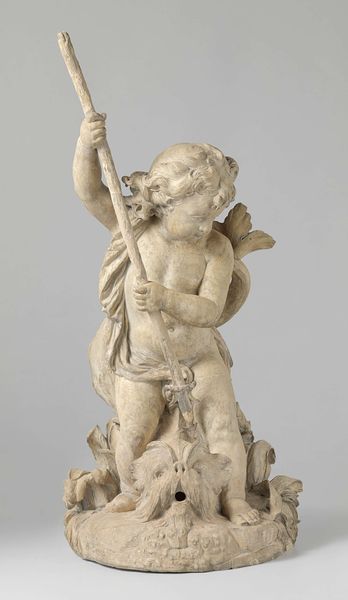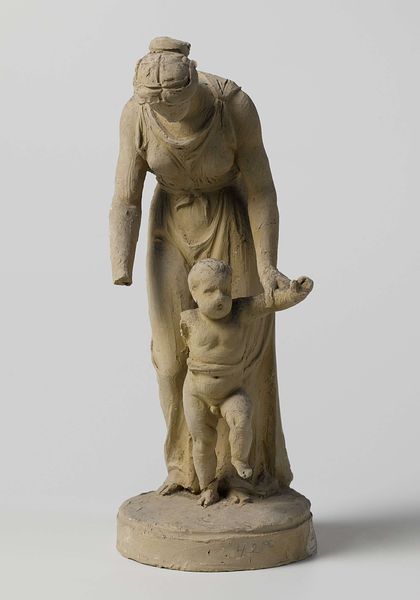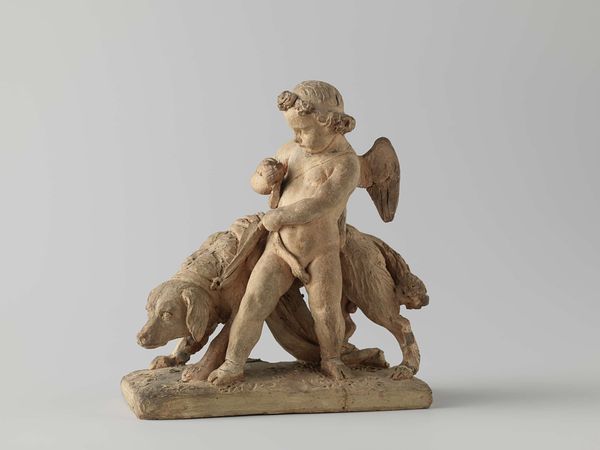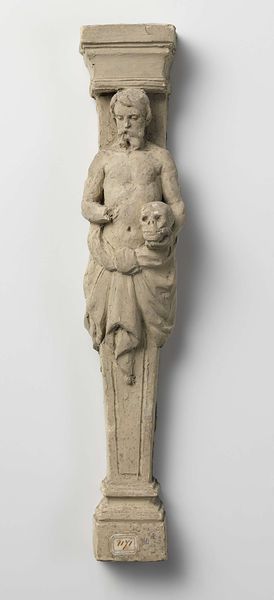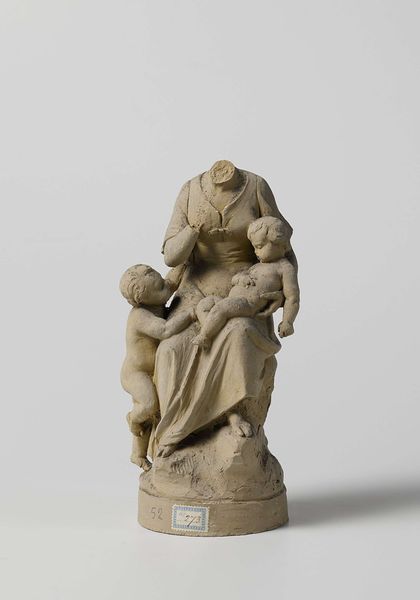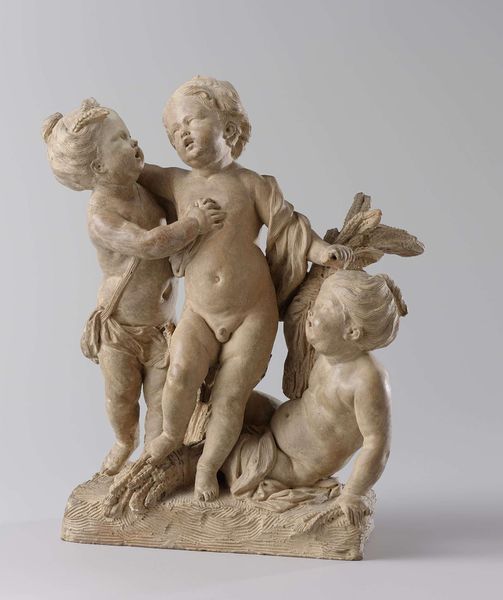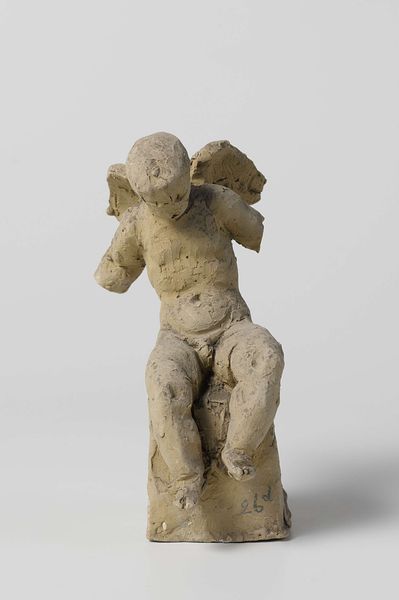
Dimensions: height 16 cm, diameter 11 cm
Copyright: Rijks Museum: Open Domain
Curator: Before us, we have "Ontwerp voor een bloemenstandaard," or "Design for a Flower Stand," crafted between 1800 and 1950 by Eugène Lacomblé. It is fashioned from plaster. Editor: It feels overtly decorative, almost saccharine, in a way. The cherubic figures, are they supporting some kind of vase? The colour lends an impression of archaic antiquity, if that makes sense? Curator: Indeed. The allegorical dimensions are definitely there. Notice how these putti, or cherubs, shoulder a vase-like structure atop them? I'm inclined to situate this within baroque figurations of support, literally and symbolically. It points toward power structures of the time. Who or what do these cherubs figuratively carry? Editor: And perhaps we can see in these representations the infantalisation of labour – consider their gender. The role and social function of the object plays an active role in creating and reinforcing contemporary ideologies. Curator: Precisely. One could extend this conversation to include notions of care and unpaid work, traditionally and contemporarily, that are largely shouldered by feminised and queer bodies within oppressive patriarchal and heteronormative systems. How might the presentation of such themes within the design for a decorative flower stand simultaneously mask and perpetuate the very structures it performs? Editor: Well, its deployment of classicising tropes— the putti, the wreaths— perhaps also reflects the ambitions of powerful, often cis-gendered men and their attempts to assert authority through references to classical ideals, appropriating youth and beauty into statements about imperial aspirations. Curator: Right. Even down to its material - the use of plaster perhaps signifies, on a symbolic level, ideas concerning ephemerality and decay in power? While stone, with its implied eternality, is most closely related to that power? Editor: Ultimately, it's a fascinating object to interrogate in regards to what imagery is acceptable for us, who is doing what kind of work, and where they stand in modern society. Curator: Precisely - an invitation to acknowledge these representations.
Comments
No comments
Be the first to comment and join the conversation on the ultimate creative platform.
